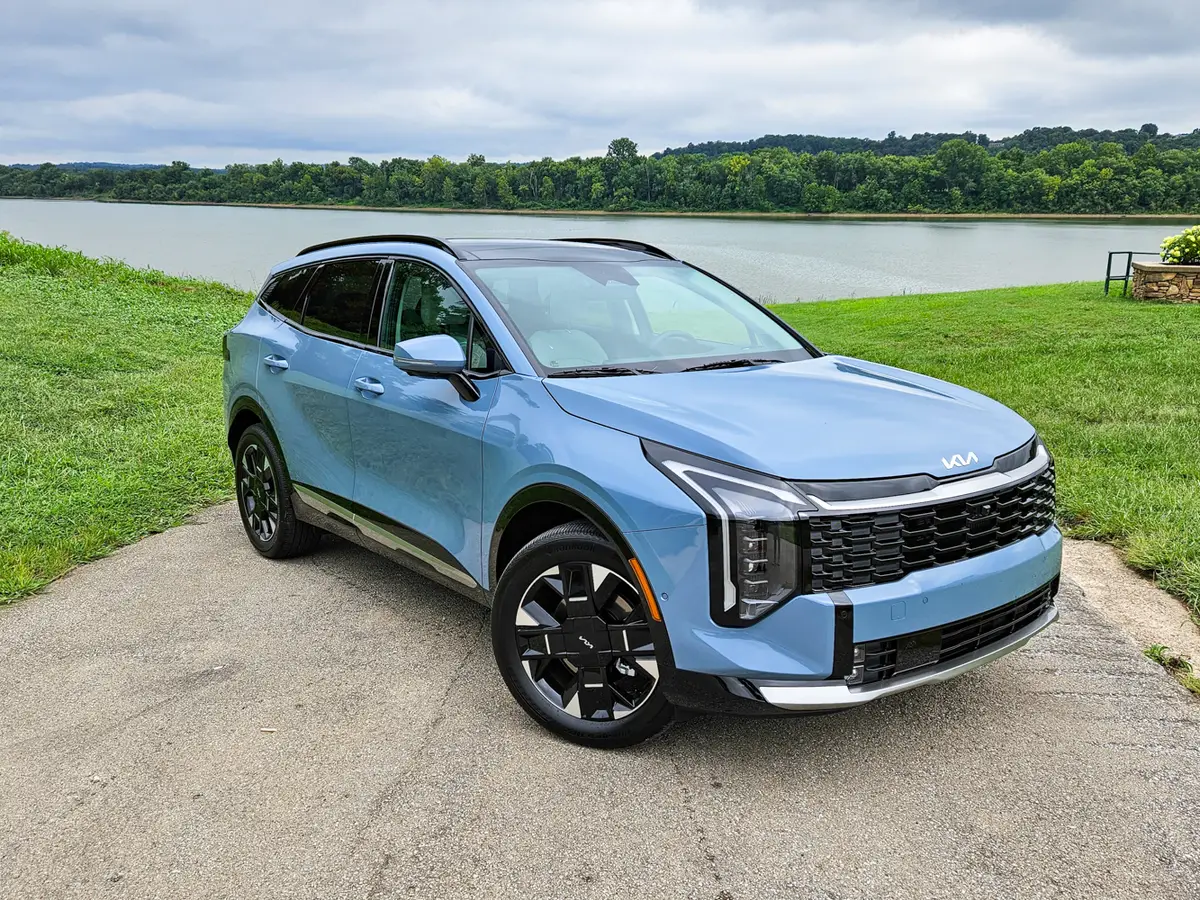chicagotribune.com's view
Not all hybrids are created equal.
True, all get better mileage with gas/electric power than the comparable model with just a gas engine.
But while the function of most hybrids is high m.p.g., the Lexus GS450h sedan offers high m.p.h. as well.
In fact, Lexus boasts that the 2007 GS450h is its fastest car, capable of accelerating from zero to 60 m.p.h. in a fraction more than 5 seconds.
The compact Prius hybrid, from Lexus’ parent Toyota, is aimed at those who desire 60 m.p.g. to conserve this planet’s supply of petroleum.
The Lexus is aimed at the environmentally conscious who feel 25 m.p.g. is an adequate contribution and don’t want to sacrifice the ability to power away from the light or dart into the passing lane ahead of the other cars on the road.
So while Toyota hopes to sell about 100,000 Prius chariots this year, Lexus is seeking 2,500 GS450h enthusiasts.
We tested the 450h, with “h” on the decklid standing for hybrid.
Though proud of its ability to offer a midsize sedan capable of small-sedan mileage — 25 m.p.g. city/28 m.p.g. highway — Lexus doesn’t brag loudly.
Besides the “h,” the only other indication that this GS is different is the word “hybrid” appearing in minuscule type along the rocker panel below each rear door. Winter snows and springtime mud surely will hide it.
The 450h is powered by a 3.5-liter, 292-horsepowerV-6 teamed with a nickel-metal-hydride battery pack that boosts the h.p. to 340.
The gas engine/battery combo packs a wallop. Step hard on the pedal and the response is as if a beefy V-8 was under the hood. Unlike a gas engine in which you build to optimum torque, batteries deliver peak torque immediately.
No hesitation. You go now — and very quickly. The battery pack acts like an electronic supercharger to give the gas engine a huge boost when needed.
Press the start button in the dash (you only have to have the key fob on you, you don’t insert it into an ignition switch) and the 450h starts in gas mode when the engine is cold or is first started for the day. After it has been running or is still warm, it starts in battery mode.
When in battery mode only, the car is eerily quiet, and that can cause a problem as we found the first day with the car. Started in battery mode and waited for the wife to appear from the front door to begin the day’s journey.
After a lengthy wait, had to see what was keeping the bottle blond so we exited and then realized we had been sitting in the car for several minutes with batteries activated though the engine wasn’t.
With no telltale sound, it was easy to lose track that battery power was being drained. The driver information center in the dash showed that the six blue bars indicating a full battery charge had dwindled to two.
That wasn’t the only drawback to the hybrid–other than price.
Lexus advised that the vehicle would operate in battery mode until about 20 to 25 m.p.h., when the gas engine would take over.
Being able to operate at low speed without consuming gas is the reason a hybrid makes so much sense in stop-and-go city driving, where you might go from one light to the next without ever reaching 20 or 25 m.p.h.
But when Lexus said 25 m.p.h. is tops in battery mode it was, of course, a challenge to see how much faster we could go before the gas kicked in. With a little practice and care, we were able to hold steady at just about 30 m.p.g., which would mean taking on city travel without consuming–or wasting–gasoline.
But running in battery-only mode left only one blue bar and meant having to press the pedal to get into gas mode so the batteries would recharge while running. More frequent braking would have helped charge the batteries by capturing the energy usually wasted in that process, Lexus says.
Before you ask, had we drained the battery pack, the car would have switched to gas power to give the batteries time to recharge.
One of the drawbacks when General Motors offered its EV-1 electric car was that it needed to pause for a lengthy charge after driving not too many miles. The disappearance of the blue bars was a reminder that gas and batteries work in harmony when each makes a contribution, but present problems when working alone–fuel consumption with gas, energy consumption with batteries.
The GS450h is designed to give you better mileage than you could expect with a gas engine alone and more responsive performance than you’d expect from a V-6 gas engine alone.
For example, the 3-liter, 245-h.p. V-6 in the GS300 is rated at 22/30, and the 4.3-liter, 300-h.p. V-8 in the GS430 sedan is rated at 18/25.
And the Lexus won’t live up to Prius’ mileage rating.
With a base price of $54,900, you’ll spend about $3,000 to $12,000 more than a gasoline GS to carry those “hybrid” badges under the doors.
You also sacrifice room to the battery pack, which takes up about half of the trunk space. The area behind and below the rear seat and rear-window parcel shelf is where the batteries reside.
Though the fastest machine in the Lexus fleet, the GS lacks stand-out styling to call attention to its fleetness. Like all Lexus vehicles, it settles on conservative design that borders on bland.
Decent room and comfort, but the leather seats can be a little slippery when motoring aggressively into and out of corners. No trouble with keeping the car under control, however, thanks to stability control and wide-profile, 18-inch, all-season radial tires.
The GS450h tested starts at $54,900, versus $43,845 for the GS300 and $52,070 for the GS450. Standard equipment includes a continuously variable automatic transmission with an infinite number of gear ratios as well as a snow mode setting to help get going in the winter.
There’s also front, side and side-curtain air bags; driver/passenger knee air bags; auto-leveling headlamps; rain-sensing wipers; heated/ventilated seats; front/rear automatic climate control; power and heated outside mirrors; power windows/door locks; power trunk open and close; and AM/FM stereo, cassette/CD player audio system with steering-wheel controls.
Options include run-flat tires at $480, wise to get so you use up no more trunk room with a spare; $1,900 for a voice-activated navigation system; and $200 for a deck-lid spoiler.
Lexus should have little trouble attracting 2,500 buyers, even at $55,000 plus, thanks to the novelty, but it will never reach Prius sales volume.
Price as tested: $59,260*
2007 Lexus GS450h
Wheelbase: 112.2 inches
Length: 190 inches
Engine: 3.5-liter, 340-h.p. V-6 with electric motor
Transmission: Continuously variable automatic
CITY 25 m.p.g.
HWY 28 m.p.g.
THE STICKER
$54,900 base
$1,900 Voice-activated navigation system
$1,780 Mark Levinson audio system
$480 Run-flat tires
$200 Rear spoiler
*Add $695 for freight
PLUSES
Hybrid that not only conserves fuel but also uses batteries to provide heck of a power boost when needed.
MINUSES
$50,000 plus investment to conserve fuel. No styling sizzle.
Read Jim Mateja Sunday in Transportation and Wednesday and Friday in Business. Hear him on WBBM Newsradio 780 at 6:22 p.m. Wednesdays and 11:22 a.m. Sundays.
jmateja@tribune.com
Latest news



